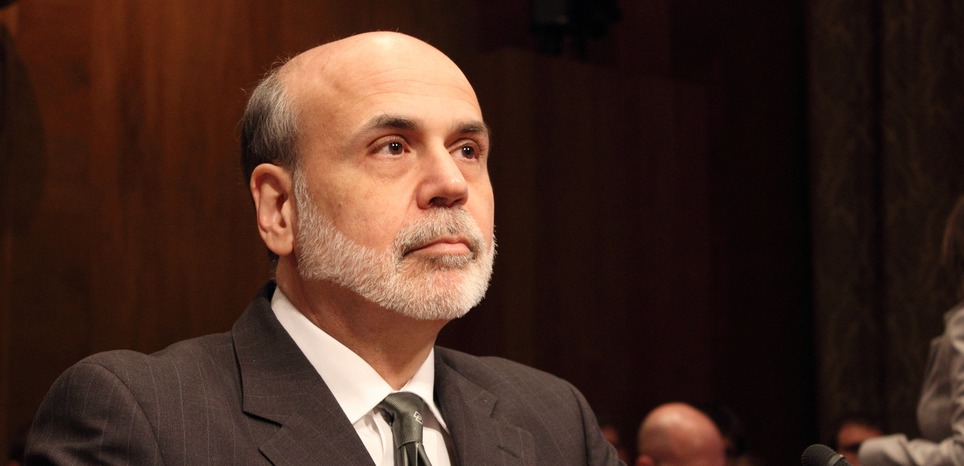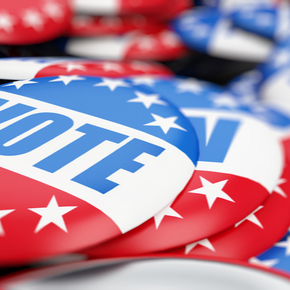By Andrew Little, Research Analyst, Global X ETFs
Infrastructure is the physical backbone of our country and is a key component of our economy: it provides jobs, it facilitates commerce, and it includes our cities, towns, roads, bridges, ports, and airports. In January, we published a three-part series on the importance of rebuilding US infrastructure and the opportunity it offers investors. We explored funding gaps and where infrastructure falls short, looked at what future infrastructure could entail, and examined the funding and reform that could get it built. While we still have the same convictions on the topic, much has happened since January that warrants further evaluation:
- COVID-19 first appeared at the end of 2019 and by March escalated into the global pandemic we are still reckoning with today. The disease has infected over 59 million people, caused almost 1.4 million deaths (both as of November 23, 2020), and forced countries both big and small to shutdown portions of their economies to slow the virus.1 The toll of such measures was, and still is, immense – in the US, over 40 million people lost their jobs and countless businesses permanently shut their doors.2 To limit these negative impacts, the government enacted a series of relief measures that increased 2020 Federal Deficit projections by approximately 400% and brought interest rates down to near-zero.3
- In early November, the 2020 US elections concluded with former Vice President Joe Biden winning the presidency, Democrats maintaining their House majority, and Republicans seemingly maintaining their Senate majority, pending the results of a January runoff election in Georgia. The contests saw the highest percentage voter turnout since 1908 and were closer than expected, especially the presidency, highlighting the current ideological divide of the American populace. While Biden’s win ushers in a new era of American leadership, a split government means this era will need to be one of bipartisan collaboration – a tall task for a divided country.
The events of 2020 will continue impacting most facets of life in the US for the foreseeable future. Infrastructure is no exception. The need to rebuild America’s infrastructure is still as acute as ever, but with new government leadership, low interest rates, and the dark cloud of the pandemic hanging overhead us, the way we build may be different than before.

How Will the Pandemic Change Infrastructure Plans?
The longstanding structural trend of urbanization is an important input for infrastructure development plans as more densely populated cities and expanding urban sprawls require accommodative physical structures. COVID-19 introduced a headwind to this trend. Faced with global stay-at-home and social distancing orders, many are evaluating whether urban living presents the same appeal as it once did. Though a pandemic-driven urban exodus didn’t occur en-masse, many of the US’ largest and densest cities like New York and San Francisco saw heightened migration during the pandemic. From March through June, 80% more individuals were looking to move out of those cities than move in, and from May through August, move requests out of New York City were up 45% versus last year.4 This does not mean that cities will cease to exist, but the distribution of populations across major cities, satellite cities, and suburban towns could evolve, placing different demands on physical and digital infrastructure:
- Coordinated stacks of shoebox apartments and offices seem less viable in a post-pandemic world where proximity to others will be scrutinized. Future infrastructure should be optimized for occupancy (“less is more”) and built with resilience in mind. This means building and retrofitting infrastructure to accommodate unforeseen circumstances like social distancing, while still fostering the collaborative environments that make cities centers of innovation. For physical infrastructure, this could mean adding modular features that make spaces more dynamic. Many streets in New York City, for example, now moonlight as areas for socialization to limit the spread of COVID-19. On the digital infrastructure side, smart city technology could prove useful for contact tracing and other disease prevention efforts.
- Public transportation will need an overhaul that improves efficiency while limiting the spread of disease – a recent survey found that 24% of New York bus and subway workers have contracted COVID-19.5 Diversifying public transport methods and building out services like water taxis can be a part of the solution, while upgrades like open gangways on subways can increase space by up to 10%.6 Additionally, the Internet of Things and Artificial Intelligence can optimize how public transit runs to limit capacity and enable distancing.
- At the beginning of the pandemic, stay-at-home orders meant that large portions of the labor force relied on cloud computing technology to work from home. Though offices are reopening their doors, the success of the work-from-home experiment means that businesses are more open to flexible work arrangements than in the past. Companies like Facebook, Twitter, and Slack, for example, now have indefinite remote work policies. Additionally, areas that lacked digital infrastructure suffered economically during the pandemic and increased digital infrastructure is essential to avoiding such disadvantages moving forward. As demand for cloud resources continues to rise, the oft-forgot back-end networks of digital infrastructure and hardware that enable cloud computing will have to scale in lockstep.
What Does a Biden Administration Mean for Infrastructure Development?
President-elect Joe Biden ran on a platform that featured aggressive infrastructure investment as a key pillar of economic policy and potential COVID-19 recovery efforts. His $2 trillion cleantech and infrastructure plan seeks to provide stimulus and job-creation by building and retrofitting physical infrastructure that facilitates commerce and improves the American quality of life. It includes transitioning energy infrastructure to achieve net-zero emissions by 2050 as well as upgrading digital infrastructure to ensure that the US remains a leader in today’s increasingly digital age.7 Looking at the particulars:8,9
Physical Infrastructure
- Rebuilding and upgrading America’s highways, roads, and bridges by sending federal funding to the states, cities, and towns that own such infrastructure, as well as by capitalizing the Highway Trust Fund
- Revitalizing commerce-facilitating infrastructure like ports, inland waterways, and railways for both passenger and freight. Goals include expanding high-speed railways across the country and providing American cities with 100,000 or more residents with federally funded zero-emissions public transportation
- Improving the resilience of America’s infrastructure by retrofitting 4 million buildings, weatherizing 2 million homes, and constructing 1.5 million sustainable homes
- Ensuring access to clean and safe drinking water by repairing and replacing pipelines, sewers, and treatment plants and integrating water quality monitoring technologies
CleanTech
- Decarbonizing the power sector by 2035 by investing in clean energy, carbon capture, use, and storage (CCUS) technology, smart grids, and stationary storage
- Reducing US buildings’ carbon footprint by 50% by 2035 through investment in electrification and energy efficiency technologies that include sustainable appliances and on-site clean energy generation
- Electrifying the transportation sector emissions by investing in and building 500,000 electric vehicle charging stations by 2030 and restoring tax credit incentives for purchasing electric vehicles
- Developing a low-carbon manufacturing sector through investment in electrification, CCUS, and clean energy
Digital Infrastructure
- Bringing high speed internet to all Americans by expanding access to broadband in rural areas. This would entail significant federal funding, the provision of broadband related jobs, supporting cities and towns that wish to build municipally owned networks, making available federally owned telecom resources, and working with the FCC to increase the number of broadband providers
- Supporting the rollout of smart cities by integrating technology and data in infrastructure and by offering funding for innovative urban planning strategies and smart city technologies
How It Gets Built
Many will rightly ask how the President-elect will accomplish this plan without a “blue wave,” or democrat-controlled Congress. This is a valid question, but we anticipate President-Elect Biden using several levers at his disposal to work toward these goals:
- An additional round of COVID-19 stimulus is necessary as unemployment persists and current trends in positive cases indicate further lockdowns. We expect that the Biden administration will push to have infrastructure investment included in any stimulus plan introduced in his first months in office. In 2009 when he was Vice President, Biden was a central figure in enacting 2009’s American Recovery and Reinvestment Act (ARRA), which allocated $105B to infrastructure investment following the Great Recession.10 This could be a successful avenue given the immense employment potential in clean energy and bipartisan support for infrastructure investment.
- Issuing executive orders is a popular tool at the President’s disposal for quickly enacting policy Congress is unlikely to approve. President-elect Biden has indicated that he will leverage this mechanism to rejoin/join the Paris Agreement and could also use it to get the Fed to join the Network for Greening the Financial System. Other executive orders could include reenacting the Obama-era Clean Power Plan and enforcing Dodd-Frank provisions that require banks to disclose business with the fossil fuel industry. While such actions are helpful for enacting regulations carried out by agencies of the federal government, they often lack substantial access to funds.
- Every President is afforded the opportunity to staff executive departments and agencies upon taking office. President-elect Biden is likely to appoint officials with climate- and infrastructure-first agendas in positions across the Executive Branch. This includes directly relevant positions like Head of the Environmental Protection Agency, the Department of Transportation, and the Department of Energy that are responsible for setting policy on emissions, energy use, and climate transparency. It includes broader positions like White House Chief of Staff and Director of the Office of Management and Budget that are important for aligning federal agencies. And it includes positions like Attorney General, Secretary of the Treasury, Secretary of Commerce, where appointees set the tone for the legal and economic systems. Cabinet members must be confirmed by the Senate, which may force Biden to compromise with GOP leadership on certain positions.
Which Companies Might Stand to Benefit?
We expect new and retrofitted physical infrastructure as well as clean energy infrastructure to require extensive raw materials including aluminum, for construction and transportation; cement, a key ingredient for making concrete; copper, for electrification; and lithium, for energy storage. Further downstream, companies exposed to upgrading physical infrastructure and building out clean energy capacity are likely to benefit from heightened investment, including those involved in construction and engineering, the production of heavy equipment, and manufacturing components in the CleanTech value chain. Additionally, those involved in the data center, cellular, and connectivity value chains should benefit from efforts to expand digital infrastructure.
Conclusion
Entering 2020, we anticipated that the Presidential election would feature infrastructure development as a key topic. The COVID-19 pandemic ensured it didn’t quite pan out that way. But this does not mean infrastructure investment is any less necessary or imminent. In fact, we believe the events of 2020 reinforce the case for infrastructure development and will shape what the next generation of US infrastructure will look like. With President-elect Joe Biden and a new Congress taking their seats in 2021, we expect to see renewed federal-level efforts to rebuild America’s physical and digital infrastructure.
Photo Credit: Spiros Vathis via Flickr Creative Commons
FOOTNOTES
1. Johns Hopkins, “Coronavirus Resource Center,” 2020.
2. The Washington Post, “Americans have filed more than 40 million jobless claims in the past 10 weeks, as another 2.1 million filed for benefits last week,” May 28, 2020.
3. St. Louis Fed, “Bad Medicine? Federal Debt and Deficits after COVID-19,” May 26, 2020.
4. Bloomberg CityLab, “What We Actually Know About How Americans Are Moving During Covid,” Sep 16, 2020.
5. NYU, “Nearly a Quarter of New York City Transit Workers Report Having Had COVID-19,” Oct 20, 2020.
6. Bloomberg Citylab, “NYC Finally Gets On Board With the Subway Car of the Future,” February 1, 2016.
7. JoeBiden.com, “Climate Plan,” 2020.
8. JoeBiden.com, “Clean Energy,” 2020.
9. JoeBiden.com, “Infrastructure Plan,” 2020.
10. NPR, “A Look Back At How Joe Biden Managed The 2009 Stimulus Package,” Apr 6, 2020.



